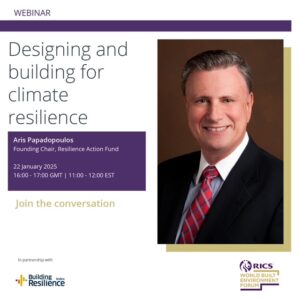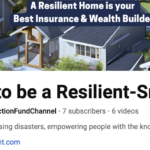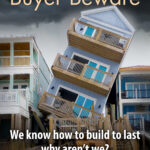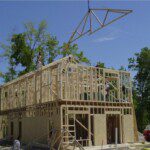Election years can polarize. Making homes and communities stronger against future storms, floods, fires and earthquakes should cut across political lines. And differing views on climate should not divide us.
If you believe global warming predictions, you need to admit we’re already at the ‘no return’ point. Natural hazards could worsen in future decades. While we can’t take our eye off carbon reduction, saving ourselves now increasingly means shifting towards adaptation. Even the Paris Agreement points in this direction.
If you doubt warming predictions, you still can’t ignore the escalating economic losses of communities succumbing to natural hazards, with its human and financial impact. So whether we blame intense hazards, or fragile development, the conclusion is one: Future development must be more resilient to hazards.
Numbers show that the majority of economic losses are not infrastructure or businesses, but our houses. Resilience for homes and communities should thus be a politically unifying theme. Making future development stronger against hazards forms a shared goal.
Doing so requires re-examining two key aspects of development:
- Where we build
- How we build
Dissecting decades of disasters, shows the problem is building the wrong way in the wrong places. It takes more effort and cost to build the right way in the wrong place. This includes locations close to coastal/river waters and floodplains, where excess water can gather.
Our predecessors were smarter than us, siting communities on ‘high ground’. We figured that by using technical and financial engineering, we could bring the risk down and develop these vulnerable lands. Evidence shows we’re failing. Our flood protections don’t always work. Our insurance schemes have become a public burden. Land-use practices incentivize vulnerable development and worsened the situation, rather than improving it. Why does the government continue to insure new construction on flood-prone sites, anyway?
Our predecessors in many ways also built stronger homes. In the name of efficiency, cost and profit, for over half a century we cheapened construction. In fact, in many areas older homes are better than newer ones. Example: Miami homes built during the 1940’s and ‘50’s are stronger than those of the ‘60’s-‘80’s. After Hurricane Andrew, codes in South Florida were beefed-up to withstand Cat-4 levels. Still, why hasn’t the rest of Florida, as well as the Gulf and Atlantic Coasts, followed suit?
The justification many use is affordability, but it is false economy. Similar to making cars affordable by removing their safety features. No one wants that kind of affordability, and decades of public education have sensitized us on car safety. Not the same when it comes to houses, even though a home purchase is bigger and more important than a car. In many ways today’s home industry resembles the car industry of the 60’s: high on cosmetics, low on resilience.
Big part of the problem is we still rely of a fragmented and inconsistent system of State and local codes and regulations for development. There are no national enforceable resilience standards. On the other hand, we expect Federal assistance when local standards lead to disasters. Akin to one person ordering and another paying. We’re beginning to see that this road leads to financial ruin.
Three possible sustainable options:
- Continue making local development rules, but shift more economic ‘skin in the game’ to the local level
- Accept some minimum Federal regional standards, in return for continued Federal aid
- A hybrid of the above
There will be opposition from groups aiming to preserve their present profitability, even though the current course is unsustainable for the rest of society, namely building and developer organizations. They are well-connected at all government levels and donate generously. These view greater resilience purely as a cost, with no corresponding revenue/profit, because buyers have not yet learned to value it.
Herein lies the ‘grand bargain’ to bridge opposing interests; and it mainly involves consumers, who so far have been left out of the discussion. Yet social mega-shifts are driven by changes in consumer preferences and attitudes, as witnessed with the rise of recycling and organic products. What could a ‘Resilience Consumer Movement’ look like?
- Truth in Resilience: Consumers to have easier and direct access to transparent information regarding which homes and locations are safer than others
- Education on Resilience: Starting in schools, to educate consumers on how a resilient home and community benefits and helps them prosper
- Marketing of Resilience: Collaborative marketing, on broadcast, print, social and other media, regarding the value and priority of a resilience over other discretionary and cosmetic consumer choices (similar to the auto safety campaign of the 1960’s-‘80’s)
A resilient home is the foundational stepping-stone towards wealth creation for lower and middle economic classes. It is a key driver of social equity. Most of their wealth is invested in their home and possessions, with little financial diversification. In contrast, a vulnerable home risks trapping people in a vicious disaster-poverty cycle, notwithstanding our post-disaster support programs. Why not make resilient homes and communities the fundamental social support program?
‘Every American has the right to live a hazard-resilient home’.
As we begin this election year, I challenge politicians from all parties to adopt this slogan.









